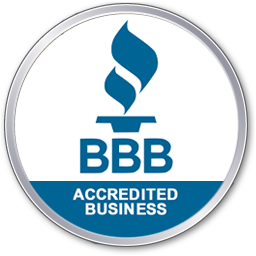If you’ve been required to complete a Phase 2 Environmental Site Assessment (ESA), the first looming question you likely have is, “How much does a Phase 2 ESA cost?”
Phase 2 ESAs can cost anywhere from $4,000 to $25,000 – and that doesn’t include the costs to make the property compliant following the results of your Phase 2 ESA. The variance in cost for a Phase 2 ESA will depend on the specifics of your site.
Factors that are taken into consideration when determining the cost of a Phase 2 ESA include:
- The types of analyses needed
- Drilling methods used
- Ease of access to the subsurface
- Groundwater testing
- Overhead constraints
- And more
While the cost range of a Phase 2 ESA may seem expensive, it’s important to remember that opting for a lower-cost ESA means you are likely skimming over information gathering that is necessary to ensure your property is compliant. And staying compliant can save you from a lot of unexpected and costly fines later.
In order for a professional to give an accurate bid, you’ll need to provide them with all the materials they ask for up front to avoid unwanted surprises (and costs) later down the road. Here, we’ll take a closer look at the factors that affect Phase 2 ESA cost and what to look for when enlisting the help of a Phase 2 ESA service provider.
What Factors Affect ESA Cost?
The way your Phase 2 ESA is handled will depend on the results of your Phase 1 ESA. Through this initial, lower-cost assessment, you likely learned more about the historic uses of your property and how likely it is that contamination is present.
Examples of some concerns that may have surfaced during your Phase 1 ESA include:
- Contaminated soil or water
- Underground storage tanks (USTs) that may be leaking
- Former gas stations, dry cleaners or auto shops on the property
- Illegal waste disposal
- Hazardous chemical compounds
You might be wondering why the cost of Phase 2 ESAs begins around $4,000 when Phase 1 ESAs typically start around $1,950. The cost of Phase 2 ESAs is higher than Phase 1 ESAs because they consist of a more thorough analysis and typically require additional equipment.
While your Phase 1 ESA may have used analysis methods like visual site inspections, historic records review and interviews with current and former property stakeholders, Phase 2 ESAs involve more invasive onsite techniques to confirm whether contamination is actually present.
Based on the type of concerns that were raised during your initial assessment, your Phase 2 ESA service provider will recommend the best course of action to gather the additional information needed to remedy the problem. Phase 2 ESAs can help answer questions like:
- Is my property compliant with local, state and federal environmental regulations?
- How long has the soil/water been contaminated?
- How long ago was the property a gas station?
- How deep does the soil contamination run?
- Where are the underground storage tanks?
Here are a few ways this information may be collected that will impact the cost of your Phase 2 ESA.
What Is Being Sampled?
The easiest way to detect the presence of potentially harmful chemicals or other hazards in soil and water is to collect and analyze samples from the site. The methods used to do this will impact the cost of your Phase 2 ESA.
Soil Samples
Soil sampling can identify which hazards are present in the soil and where they came from. For example, if you uncovered oil in the soil during your Phase 1 ESA, your Phase 2 ESA will help determine whether that oil may have leaked out of an underground storage tank or came from the property’s previous commercial use as an auto repair shop.
Soil samples can also identify what type of oil is present and how long it has been there, both of which are important pieces of information for proper remediation.
Water Samples
Like soil samples, water samples can determine whether contaminants are present in groundwater or well water. These samples can also identify:
- The type of contaminant(s) that are present
- The extent of contamination
- The concentration of the contaminants in the water
- How those contaminants are spreading
To gain accurate and quality information regarding the flow, direction and concentration of the contaminated water, a groundwater monitoring well will likely need to be installed. These wells will require drilling for installation and are often required by regulatory agencies.
Where Are We Sampling?
Aside from the material that is being sampled, the location of that material is also important in determining Phase 2 ESA cost, as some places are easier to access than others.
Depth of Wells
If you are having well water sampled, the depth of the well is a big factor in Phase 2 ESA cost. Wells can tap into aquifers of all different depths. Private groundwater wells can be anywhere from 25 to more than 1,000 feet deep, according to the U.S. Geological Survey, which is the science agency for the U.S. Department of Interior. On average, most wells range from 100 to 800 feet, according to the Water Systems Council.
Subsurface Composition
Another Phase 2 ESA cost factor is the composition of the earth on the site. This is important to consider when drilling is involved. Drilling into stone, for example, will require more time, effort and equipment than drilling into dirt or soil, which means it will cost more.
Type of Site
The type of site is also a cost factor. Different sites will require different access and have unique challenges to work around. Some sites will require more equipment than others based on these characteristics, so costs will vary.
How Big Of An Area?
It should go without saying that large sites will have higher Phase 2 ESA costs than smaller sites. This is because there is more ground to cover in the search for contaminants or other hazardous concerns.
Bigger sites may also require:
- More holes to be drilled
- More samples to be collected and analyzed
- More wells
The more time, manpower, ground and tools involved, the higher your Phase 2 ESA cost will be.
How Much Equipment?
The type and amount of equipment needed to perform a thorough assessment may be one of the biggest factors impacting Phase 2 ESA cost. Some sites will require large or specialized tools, such as:
- Radar tests to locate underground tanks
- Electromagnetic surveys to find metal piping
- Smaller equipment to fit into tight spaces
- Excavators or drilling equipment for digging holes
It’s important to ask up front about the type of equipment that may be necessary so you can get a better sense of how much to budget.
How To Hire A Phase 2 ESA Company
Receiving an accurate, reliable and cost-effective Phase 2 ESA is crucial for your property, which means you shouldn’t hire just anyone to do it. Here are some tips to help you find the best Phase 2 ESA company for your situation.
- Do your research: It’s never a good idea to hire blindly. Look at the company’s reviews, see how easy it is to get in touch with them and ask about their experience with your specific circumstances.
- Ask questions: Asking questions is not only a great way to “interview” a company to see if they’re right for the job – it’s also a good way to get a sense of what your Phase 2 ESA might cost. Quiz them about how they’d approach your assessment based on your Phase 1 ESA results.
- Compare scopes: Just like when buying a new car, price shopping is a great way to narrow down your options. Ask for quotes from multiple reputable companies and compare how they differ. Some companies are better at using quality cost-cutting methods than others.
Avoid Phase 2 ESA “Scams”
Unfortunately, not every company out there advertising Phase 2 ESA services has good intentions. Be on the lookout for red flags, and keep in mind that you usually get what you pay for.
While some companies may offer attractively cheap bids, they likely provide cheap work that won’t uncover all of the issues. This could include not sampling deep enough, just sampling soil and not groundwater or refusing to follow other industry best practices.
If you’re looking for a trustworthy Phase 2 ESA partner in the Portland, OR, area or just want to talk to someone about your property, contact Alpha Environmental. Our professional geologists and environmental scientists have successfully sampled hundreds of sites and are well-versed in conducting high-quality, cost-effective Phase 2 ESAs.
Fill out our online form or call us at 503-292-5346 to learn more.




